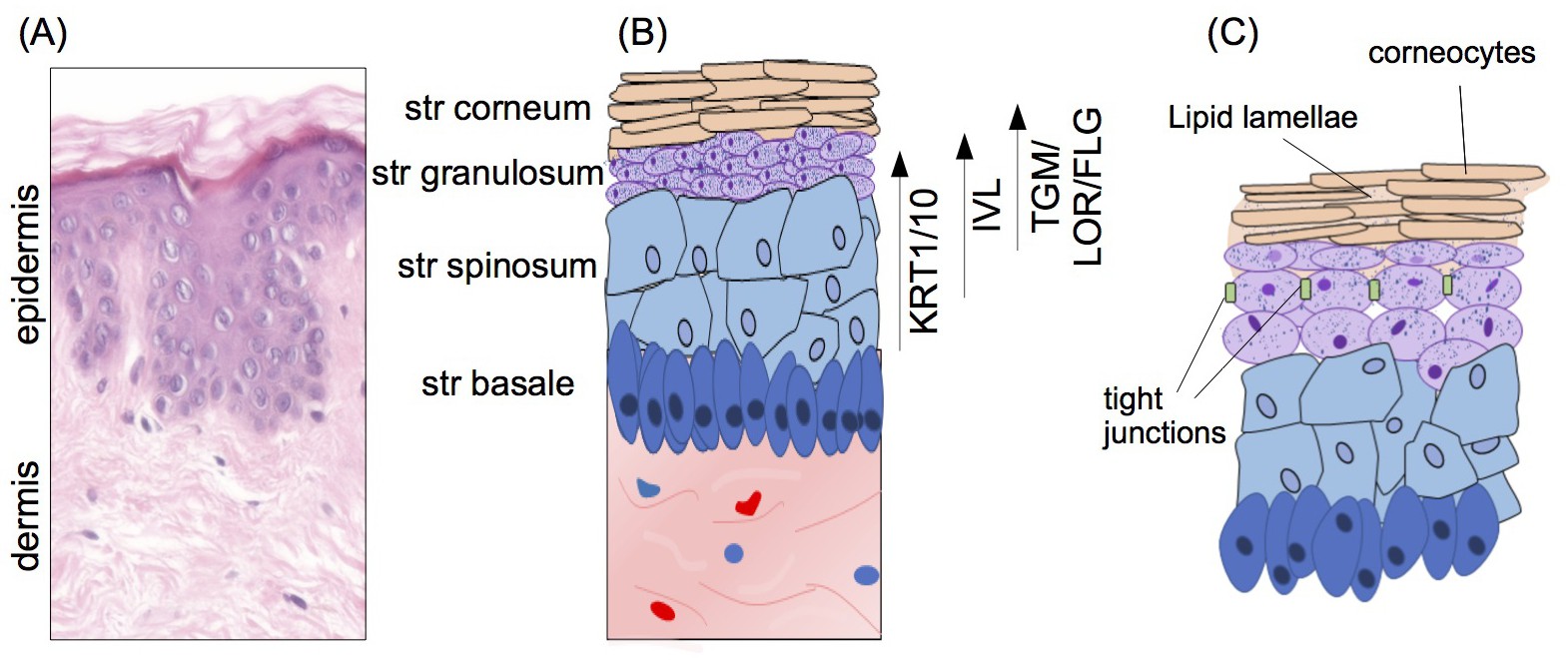Fig. 1. Structure of the mammalian skin. Histological section (HE staining) (A) and schematic illustration (B, C) of human skin. Human skin consists of two main components: the dermis consisting of fibroblasts embedded in a fibrous network and the outermost epidermis that is stratified into four layers: stratum corneum, stratum granulosum, stratum spinosum and stratum basale (A, B). Each layer is characterized by the expression of specific differentiation marker proteins such as KRT1/10 (keratin 1/10), IVL (involucrin), TGM (transglutaminase), LOR (loricrin) and FLG (filaggrin) (B). The protective epidermal barrier is formed by corneocytes embedded in lipid lamellae and tight junctions (TJ) that seal cells of the stratum granulosum (C).
